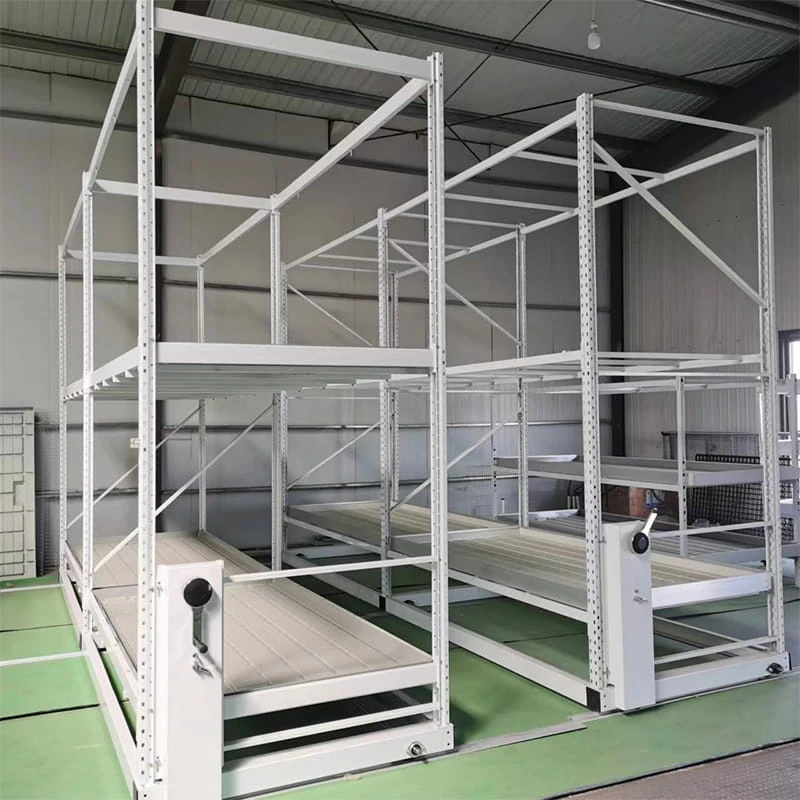Greenhouses are a haven for plant enthusiasts and commercial growers alike, providing a controlled environment for optimal plant growth. Within these structures, greenhouse tables play a vital role, offering a versatile surface for various gardening activities. In this article, we delve into the world of greenhouse tables, exploring their purpose, benefits, and applications in both small-scale and commercial greenhouse operations.
Here is the introduction of the greenhouse table:
- Function and Design:
A greenhouse table refers to a dedicated surface within a greenhouse that serves multiple functions. These tables are typically constructed using materials such as metal, plastic, or wood, chosen for their durability and resistance to moisture and other environmental factors. They are designed to withstand the demands of greenhouse environments and provide a stable and organized workspace for plant-related tasks. - Plant Display and Work Surface:
Greenhouse tables serve as convenient work surfaces for gardeners and horticulturists. They offer an elevated platform that allows for comfortable working heights, reducing strain on the back and knees. Gardeners can use greenhouse tables for activities such as potting plants, transplanting seedlings, pruning, and arranging floral displays. The tables provide a clean and designated area for these tasks, making gardening operations more efficient and organized. - Plant Growing Surface:
One of the primary functions of greenhouse tables is to provide a surface for plant cultivation. The raised platform of the table allows for better air circulation around plants, reducing the risk of disease and promoting healthy growth. Gardeners can place plant containers, trays, or pots directly on the table, optimizing space usage within the greenhouse. This arrangement makes it easier to monitor and tend to the plants, ensuring they receive adequate light, water, and nutrients. - Efficient Space Utilization:
Greenhouse tables offer an efficient solution for maximizing growing space. By utilizing vertical space, gardeners can stack multiple tables or shelves to accommodate a larger number of plants in a compact area. This is especially beneficial for small-scale greenhouse enthusiasts or those with limited space. Additionally, the organization provided by greenhouse tables facilitates plant care and maintenance, making it easier to access and tend to each individual plant. - Customization and Adaptability:
Greenhouse tables can be customized to suit specific needs and plant requirements. They can be built in various sizes, heights, and configurations, allowing gardeners to create a layout that best suits their greenhouse space and the types of plants they grow. Some greenhouse tables incorporate features such as adjustable height options, removable trays for easy cleaning, and built-in irrigation or drainage systems. This adaptability ensures that the tables can accommodate different plant sizes, growth stages, and cultivation methods. - Commercial Production Applications:
In commercial greenhouse operations, greenhouse tables are an essential component of efficient plant production. They are designed with scalability in mind, allowing for uniformity and standardization in plant arrangement and cultivation practices. Commercial greenhouse tables often incorporate automation features, such as conveyor systems or robotic transport, to streamline plant handling and maintenance processes. These tables contribute to increased productivity and streamlined operations in large-scale greenhouse production.
Greenhouse tables provide a versatile and practical solution for plant enthusiasts and commercial growers within greenhouse environments. Whether used as a work surface for gardening tasks or as a dedicated space for plant cultivation, greenhouse tables offer numerous benefits, including efficient space utilization, improved organization, and adaptable designs. Aspiring gardeners and professional growers alike can harness the versatility of greenhouse tables to enhance their greenhouse experience and optimize plant health and productivity.
Benefits of Greenhouse Tables
Here is some more information about greenhouse tables:
- Space Optimization: Greenhouse tables maximize the use of vertical space, allowing for efficient plant organization and increased production per square foot.
- Improved Plant Access: The elevated platform of the tables makes it easier for growers and workers to access plants for pruning, watering, and other maintenance tasks without excessive bending or reaching.
- Enhanced Drainage and Irrigation: Many greenhouse tables are designed with built-in drainage systems, allowing excess water to flow away from the plants and preventing waterlogging. Some tables also have integrated irrigation systems to efficiently deliver water and nutrients to the plants.
- Disease and Pest Management: By providing a raised platform for plants, greenhouse tables can help reduce the risk of soil-borne diseases and pests. It also facilitates better airflow around the plants, minimizing the chances of fungal infections and promoting healthier growth.
Table Accessories: To further optimize plant growth and management, greenhouse tables can be equipped with various accessories, such as:
- Trays and Inserts: These provide a contained space for individual pots or seedlings, aiding in organization and preventing cross-contamination.
- Shading and Covering: Covers or shade cloths can be added to regulate light intensity and protect plants from excessive heat or cold, depending on the season.
- Overhead and Side Supports: Trellis systems or overhead wires can be installed above the tables to support vining crops or provide vertical growth space.
- Lighting Systems: In indoor or controlled environment greenhouses, supplemental lighting fixtures can be mounted above the tables to ensure adequate light levels for plant growth.
Maintenance and Cleaning: Regular maintenance and cleaning of greenhouse tables are essential to prevent the buildup of debris, pathogens, or pests. Tables should be cleaned between crop cycles and disinfected as necessary to maintain a healthy growing environment.
Greenhouse tables offer a versatile and efficient solution for plant cultivation in controlled environments. They provide a structured and organized platform for plants, allowing growers to optimize space, improve plant access, and enhance overall plant health and productivity.
